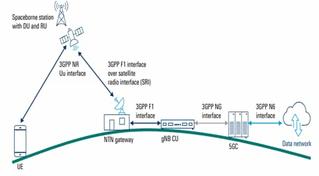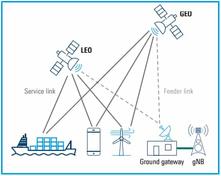Difference between UAV vs HAPS vs Satellite
Advertisement
Introduction : In modern communication and surveillance systems, UAVs (i.e. Drones), HAPS (High Altitude Platform Stations) and Satellites are three key technologies that extend connectivity and coverage beyond traditional networks.
UAV
- It is the short form of Unmanned Aerial Vehicle, also known as drone.
- It is a small aerial platform which can be controlled remotely or operate autonomously.
- It operates at the low altitude (up to 5-10 Km)
- It is used for surveillance, delivery, photography, agriculture and communication relays
- Offers limited coverage, lower latency
HAPS
- It is the short form of High Altitude Platform Station
- It can be aircraft, balloon or solar powered drone positioned in the stratosphere at the altitude of about 17-22 Km.
- Offers wide coverage, medium latency compared to satellite
- It acts like “Cell tower in the sky”
- It is used for broadband connectivity, disaster recovery & rural internet
Satellite
- It orbits Earth at LEO (~500 to 2000 Km), MEO (~10,000) or GEO (~36000 Km).
- Offers very wide coverage (both global or regional level)
- It is used for TV Broadcasting, GPS, weather forecasting, global internet, defense etc.
- It is expensive to launch and has higher latency (especially in GEO).
Key differences
| Feature | UAV | HAPS | Satellite |
|---|---|---|---|
| Altitude | Low (~100 meters to 10 Km) | Medium, placed in stratosphere (~17 to 22 Km) | High, Placed in Space, vary based on orbit |
| Coverage Area | Very Small | Regional | Very Large |
| Deployment/Cost | Easy to deploy/Low | Medium Effort/Medium cost | Requires rocket launchers/ Very costly |
| Latency | Very Low | Low to Medium | Medium to High |
| Mobility | Can move freely | Semi-stationary | Fixed Orbit |
| Endurance | Hours | Weeks to Months | Years |
| Applications | Local surveillance, Delivery etc. | Rural broadband, disaster recovery | Global broadband, GPS, TV, Weather, Space Communication |
Conclusion:
In summary, UAVs, HAPS and Satellites serve complementary roles in the communication ecosystem. Each operates at a different altitude, from low flying drones to stratospheric HAPS and space based satellites, offering unique advantages in terms of coverage, cost, latency and applications.
Advertisement
 RF
RF

